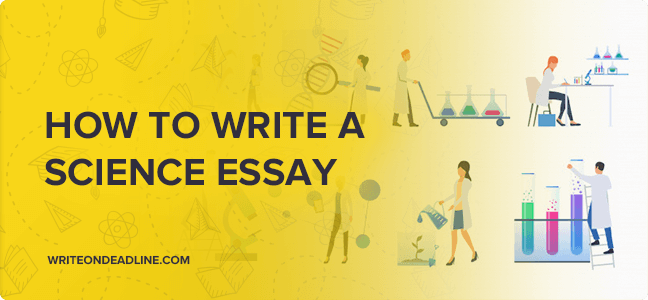How to Write a Science Essay

Table of Contents
Introduction to Science Essays
What is a Science Essay?
A science essay is an academic piece that provides a clear, concise, and logical presentation of scientific data and arguments. It is a tool for students to demonstrate their understanding of scientific concepts and their ability to apply these concepts to different scenarios.
Purpose in Education
The primary purpose of a science essay in education is to cultivate critical thinking, analytical skills, and the ability to convey complex ideas in an understandable manner. This form of writing encourages the synthesis of information and the development of a reasoned argument.
Importance of Clarity and Logic
In scientific writing, clarity and precision are paramount. Every statement must be accurate and supported by evidence. Logical progression from one idea to the next ensures the reader can follow the argument and arrive at the same conclusion based on presented evidence.
Understanding the Assignment
Interpreting Essay Questions and Guidelines
Before you begin writing, it’s crucial to thoroughly understand the essay question and any provided guidelines. Look for keywords that indicate the required task, such as “discuss,” “compare,” or “analyze.”
Defining Scope and Objectives
It’s also vital to define what your essay will cover (scope) and what you aim to achieve (objectives). This ensures you stay on topic and fulfill the assignment’s expectations.
Research and Note-taking
Strategies for Effective Scientific Research
Effective research in science involves:
- Utilizing reputable sources such as peer-reviewed journals.
- Cross-referencing information to ensure reliability.
- Staying current with recent studies and scientific debates.
Methods for Organizing Research Notes
Organizing your notes is critical for synthesizing your research:
- Use bullet points to summarize key information.
- Create a system to categorize different types of data.
- Develop a list of references as you go to avoid plagiarism.
Thesis Statement and Argument Structure
Crafting a Strong, Clear Thesis Statement
A thesis statement is the anchor of your essay. To craft a strong thesis:
- Be Specific: Your thesis should address a particular issue or question.
- Be Assertive: Take a clear stance to set the direction of your argument.
- Be Concise: Express your main idea succinctly, in one or two sentences.
Building an Argument
Your argument should:
- Follow a Logical Structure: Present ideas in a logical sequence, from premises to conclusion.
- Use Evidence: Support each point with relevant, credible data or research.
- Address Counterarguments: Consider and refute opposing viewpoints to strengthen your position.
Essay Outline
Components of a Science Essay Structure
An effective outline includes:
- Introduction: Introduces the topic, provides background, and presents the thesis.
- Body: Each paragraph covers a single point that supports the thesis.
- Point: State the main idea of the paragraph.
- Evidence: Present data or citations.
- Explanation: Explain how the evidence supports the point.
- Conclusion: Summarizes the argument, restates the thesis, and discusses the implications.
Creating an Outline
When creating an outline:
- Start Broad: Outline the main sections first.
- Refine: Break down the sections into paragraphs.
- Sequence: Ensure each point flows to the next.
Writing Process
Writing a First Draft
- Don’t Aim for Perfection: Get your ideas down first.
- Follow Your Outline: Use it as a roadmap for your argument.
Refining Subsequent Drafts
- Revise for Clarity: Ensure your ideas are clear and concise.
- Seek Feedback: Use peers or mentors to critique your draft.
- Edit Ruthlessly: Cut unnecessary jargon and complex language.
Balancing Detail and Readability
- Know Your Audience: Adjust the technical level to their background.
- Define Terms: Explain or define technical terms when first used.
- Use Analogies: They can help clarify complex concepts.
Data and Evidence
Presentation and Discussion of Data
- Use Visuals: Graphs and tables can illustrate data points clearly.
- Be Precise: Ensure all data presented is accurate and relevant.
Analyzing and Interpreting Findings
- Be Critical: Assess the reliability and limitations of your data.
- Be Objective: Interpret findings based on the data, not personal bias.
Citations and Referencing
Importance of Citations in Science Writing
Citations are crucial for:
- Acknowledging Sources: Giving credit to original ideas or findings.
- Supporting Claims: Providing evidence for your arguments.
- Avoiding Plagiarism: Demonstrating academic integrity and respect for intellectual property.
Using Various Citation Styles
Each citation style serves different academic disciplines:
- APA: Common in the sciences, focusing on date of publication.
- MLA: Used in the humanities, emphasizing page numbers for quotations.
- Chicago: Versatile, used in various fields, known for its flexibility and footnotes.
When using these styles, adhere to guidelines on formatting, in-text citations, and reference lists.
Editing and Proofreading
Techniques for Effective Editing
Editing involves:
- Content Review: Ensuring arguments are coherent and supported by data.
- Structure Check: Verifying logical flow and paragraph organization.
- Language Refinement: Improving readability through sentence structure and vocabulary.
Role of Peer Review
Peer review can:
- Provide Perspective: Others can spot issues you may have overlooked.
- Enhance Quality: Constructive feedback leads to improved content.
- Validate Arguments: A consensus from peers can strengthen your essay’s credibility.
Ethical Considerations
Avoiding Plagiarism
To avoid plagiarism:
- Quote and Paraphrase Properly: Always credit the original source.
- Cite Everything: If it’s not your idea, provide a citation.
- Use Plagiarism Checkers: Tools can help identify unintended copying.
Ensuring Scientific Integrity
Maintain integrity by:
- Reporting Honestly: Present data and results truthfully, even if they don’t support your hypothesis.
- Acknowledging Limitations: Be upfront about the scope and limitations of your research.
Conclusion
Writing a Strong Conclusion
A conclusion should:
- Restate the Thesis: Reinforce the main argument of your essay.
- Summarize Key Points: Briefly recap the main evidence supporting the thesis.
- Discuss Implications: Highlight the significance of your findings in the broader context.
- Suggest Future Research: Identify gaps that require further investigation.
Remember, your conclusion is your final chance to emphasize the importance of your findings and leave a lasting impression on your reader. It’s not just a summary, but a closing argument that underscores the contribution your work makes to the field of study.

